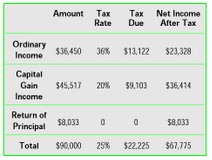
This year the oldest baby boomers—those born in 1946—are turning 65. Millions of other boomers will reach this milestone over the coming 18 years until the youngest of that generation, those who were born in 1964, reach this age. By that time the oldest boomers will be in their early 80s.
With falling death rates and increased longevity, most of those boomers turning 65 can expect to survive to age 80 or beyond. Some 40 million people in America currently comprise the 65-and-older population group. By the year 2050 the 65+ group is projected to more than double to almost 90 million largely as a result of aging boomers. By mid-century more than 20 percent of the U.S. population will be age 65 or older. By comparison, between 1980 and 2010 the 65+ population increased by just 2 percent.
Meanwhile the growth of the “oldest old,” those 85 and older, is expected to grow at an even faster rate. The 85-and-older population currently numbers around 6 million persons and the ranks of this group are projected to more than triple to 19 million by 2050.
The projected changes in America’s age composition can be expected to have major social and economic consequences. Virtually every facet of American life is likely to be affected. Understanding the rapid aging of America’s donor population will be critical to the success of those responsible for nonprofit funding in both the near and long term.
Tsunami or gradually rising tide?
On the surface the projected increase in the 65+ population would naturally cause a greater interest in gifts that are appropriate for older persons. Those who are prompted to react quickly to the planned giving “buzz” about aging boomers are likely to be in for a major disappointment in the near term, however.
The projected age wave of older Americans is more akin to a gradually rising tide than a tsunami. Instead of a sudden surge, there will be a gradual increase over time (18 years) as the baby boom generation enters the 65+ phase of life one birthday at a time.
2030 and counting

Some 19 years from now, in the year 2030, the youngest of the boomers will have reached age 65 and the growth of the 65+ population will begin to slow. At this same time the oldest boomers will be in their early 80s, leading to a large increase in the population group responsible for the vast majority of gift revenue from matured estates each year. According to government figures and other studies, more than 75 percent of charitable bequests are realized each year from decedents 80 and older with some 92 percent of bequests coming from those who die over the age of 70.
A recent Sharpe gift planning audit revealed that more than 60 percent of our clients’ bequest donors were dying beyond the age of 90. With ongoing healthcare and life-style changes, life expectancy can be expected to continue to increase. [See ‘100 and Counting’ at right.]
Every picture tells a story
Those responsible for managing or overseeing fund development programs need to consider how and when these demographic shifts are likely to impact their efforts. Those who ignore these trends or misunderstand the implications may experience unnecessary negative consequences from over-inflating expectations and misallocation of budget resources.
The first step to avoiding problems may well be to understand the makeup of your existing donor or membership file. Every organization is different; each one has a unique profile in terms of age and wealth of their donors.
Some tend to primarily acquire donors late in life, while others largely appeal to younger persons. Others enjoy a very broad appeal to all age ranges. Knowing the age profile of your support base will increasingly be the key to understanding how best to allocate limited staff and other resources in ways that assure a solid return on investment over a reasonable period of time. Understanding the makeup of your constituency and how it is likely to change over time may be the first step in determining how best to proceed with your overall fundraising efforts in both the near and longer terms.

